India is famed for its diversity and colourfulness, and the majestic Jain temples in scenic Rajasthan showcase the magnificent integration of different traditions in one country.

This not only adds vibrancy to its culture but also creates the possibility for numerous religious unities.
Among some of the various faiths in India, Jainism is among the most widely practised, and there are several Jain temples located throughout the nation in all the states.
Rajasthan, like many other states in India, has many Jain temples, the majority of which are majestic and among the most famous Jain temples in India, making this state ideal for a Jain pilgrimage destination.
Dilwara temples, Mount Abu
The temples are situated on the magnificent Rajasthan mountain range of Mount Abu, which is accompanied by wooded hills, and were erected here between the 11th and 13th century AD by Vastapul Tejpal. Dilwara Temples is one of India’s most famous tourist destinations due to its magnificent marble craftsmanship, which is internationally acknowledged.
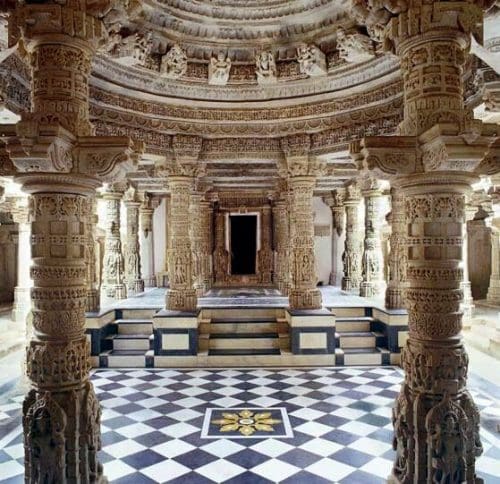
The Dilwara temples are a series of five renowned temples constructed of marble that are also a popular pilgrimage site for Jains. It is regarded as the world’s most magnificent Jain temple. The magnificent craftsmanship on the door depicts the stunning yet basic architecture that draws viewers in. The pillar sculptures are a true portrayal of every lovely note of Jain mythology.
Sanghiji Temple, Sanganer
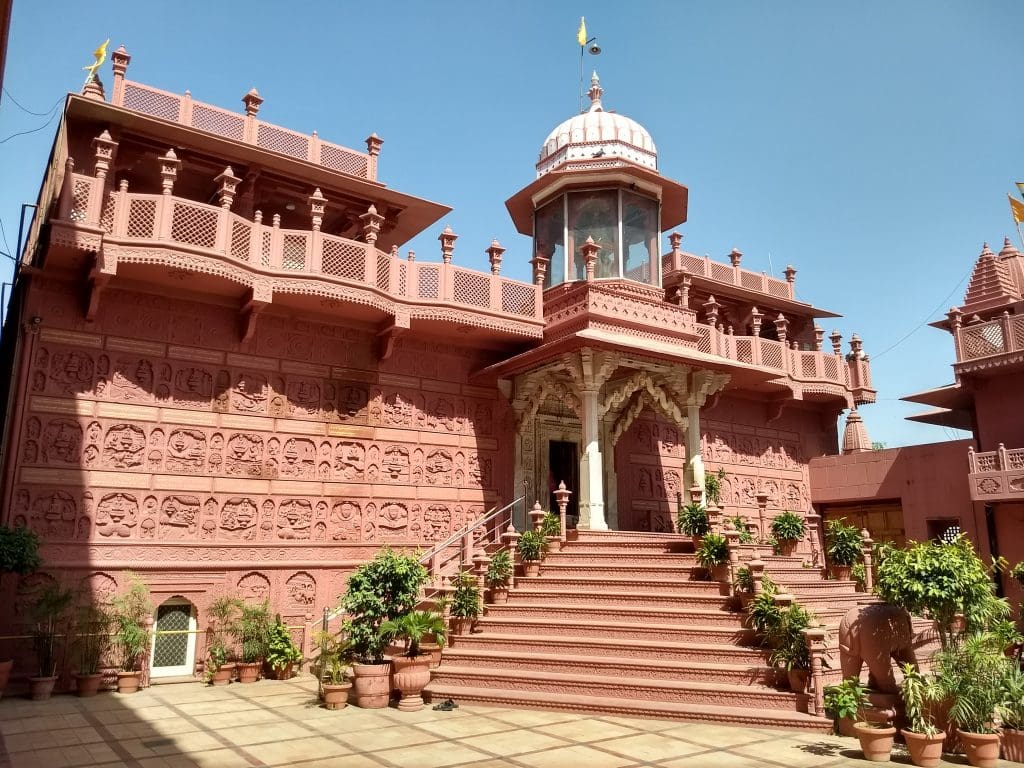
It is not just one of Rajasthan’s finest Jain temples, but also one of the oldest in the nation. This Digambar Jain temple is a gorgeous building of red sandstone that is said to be 4000 years old and to house the devout shrine of Lord Rishabhanatha (Adinatha), the first Tirthankara. The temple offers numerous contemporary conveniences, including a dining room where travelers may consume only vegetarian food.
Ranakpur Jain Temple, Ranakpur
The massive and beautiful Jain temple is in the memory of Lord Tirthankara Rishabhanatha, and the building began in the 15th century by a Jain industrialist named Dharna Shah. The rest of the building was funded by Rana Kumbha, after whom the city of Ranakpur and the shrine are named.
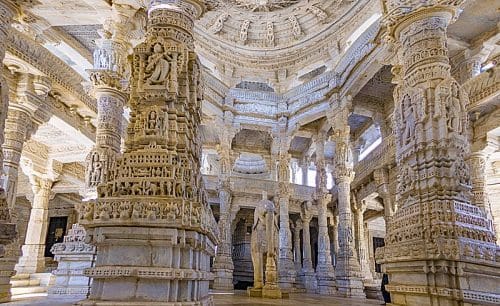
It is built in a quadrupled shape with four facing directions, representing the Tirthankaras conquest of the four primary paths or exhibiting the universe. The temple’s structure and embellishments are inspired by the Mirpur Jain Temple in Rajasthan. This cultural site is supported by thousands of artistically carved pillars, each of which is designed uniquely.
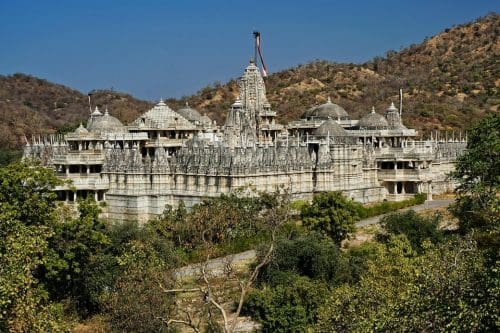
Ranakpur Temple is a stunning site of Jain heritage and spirituality. This spectacular temple complex houses an impressive array of temples, such as the awe-inspiring Chaumukha Temple, Surya Temple with its intricate carvings, Suparshvanatha’s majestic sanctuary and Amba’s breathtakingly beautiful abode – making it one of India’s most important pilgrimage sites for devotees from around the world.
Nakoda Jain Temple, Barmer
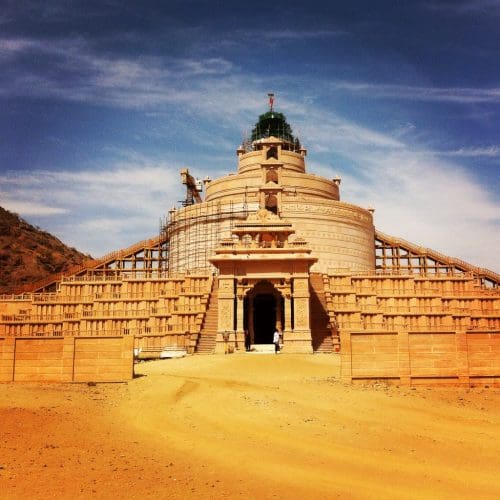
This temple is among the most popular Jain temples in India, and it is situated alongside the forest hills. The temple houses the idol of Mulnayaka Shri Parshvanath, who is black. The statue was brought to the temple from the Nakoda village, which is why the place is recognized as the Nakoda Parshwanath temple. The Parsvnath God’s statue is constructed of a black-colored idol and lays in the lotus posture, and the temple is recognized for miracles and as a holy spot for the Jain worldwide.
Soniji Ki Nasiyan, Ajmer
The temple is considered the Ajmer Jain temple since it is situated in the center of Ajmer and is an architectural marvel. It is a Digambar Jain temple, and the principal deity is Lord Rishavadeva.
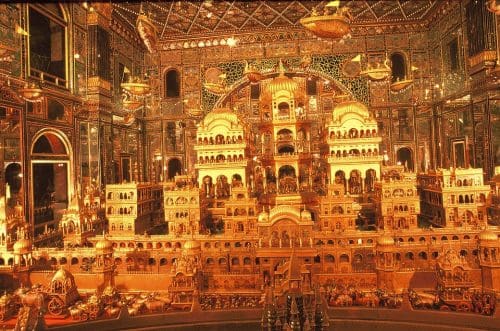
It was erected in the late nineteenth century and required about 25 years to complete. The temple has an interior chamber composed of gold, which is known as Swarna Nagarior, or the “City of Gold.” The hall has several gold-plated wooden sculptures representing Jainism, as well as numerous other religious idols.
Tijara Jain Temple, Alwar
Recognised as an Atishaya Kshetra (Place of Salvation), this lovely Jain temple is situated in the hill town of Tijara in the Alwar district. The temple is a work of art and a major pilgrimage destination for Jains.
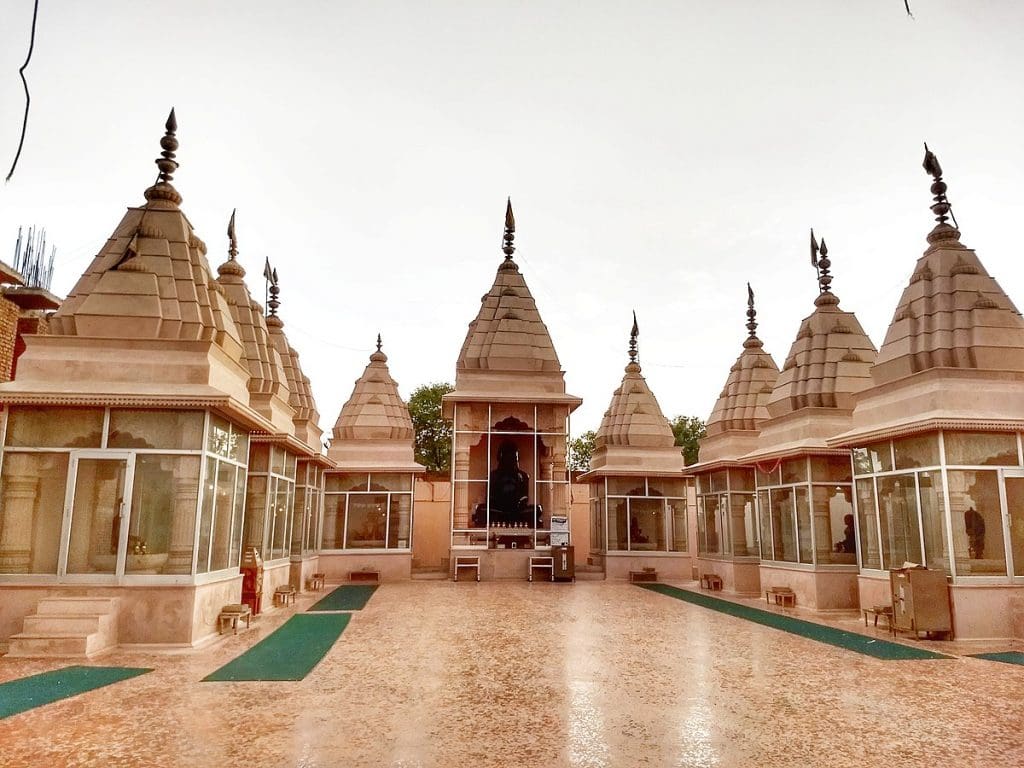
The major idol here is Lord Chandraprabhu, who is considered to be the 8th tirthankar of the cosmic era. It is rectangular in design, giving it a stunning aesthetic with a sky-high view. A large number of tourists take a trip to this temple to witness the statue, which is entirely formed of black stone.
It is thought to be 250 years old, making it an ideal location for Jains. The devotees have a strong conviction that all genuine prayers are answered here, and the ‘Kundli Dust’ even works as a cure for all grief and sickness.
Seth Bhandasar Jain Temple
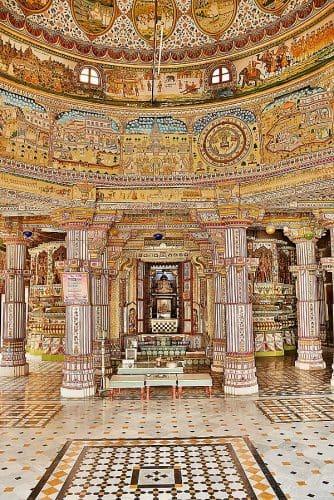
The Jain temple, erected in the 15th century, is one of Bikaner’s holiest and oldest places. Mirror work, frescoes, and leaf paintings adorn it. It is made of red sandstone and has three storeys. By going to the topmost floor of this temple, one can glimpse the Bikaner skyline. The temple is said to have been built with 40,000 kg of ghee rather than mortar, which residents claim leaks through the walls during warm summers.
Shri Chandanpur Mahavirji Jain Temple
Shree Chandanpur Mahavirji is among the most beautiful Jains pilgrimages and situated in the district of Karauli in Rajasthan and 110 km from Sawai Madhopur town. Your trip to the Hindaun Sub District of Rajasthan is awe-inspiring in every way. The major shrine here is Lord Mahavira, the 24th and last Jain Thirthankara. The shrine of Chandanpur Mahavirji is regarded as the heart of Jains.
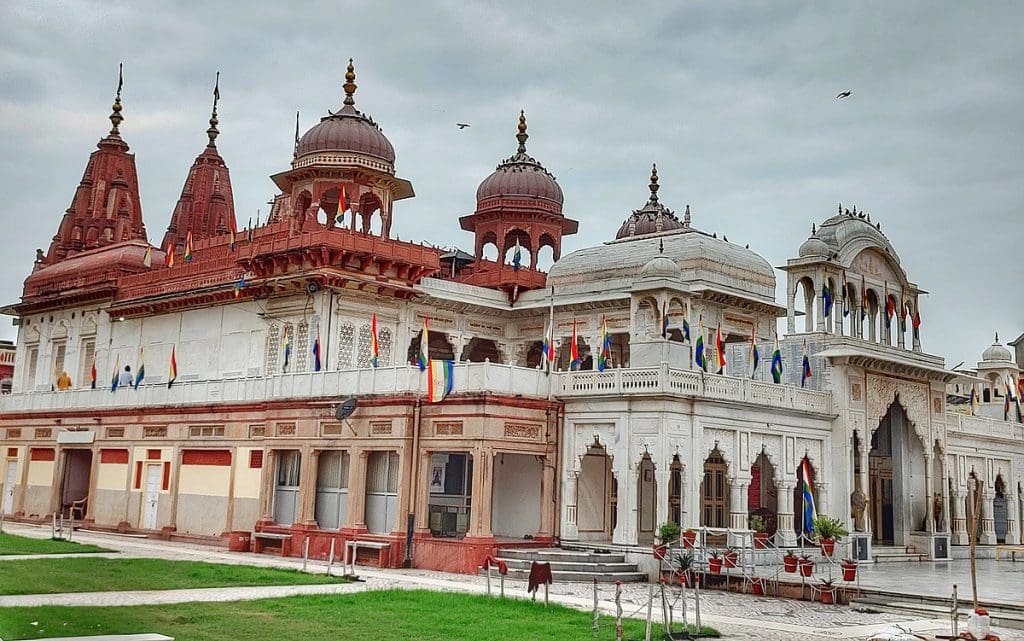
The original location of the temple has now been covered by a marble umbrella decorated with depictions of the Lord’s feet. The temple’s structure is both majestic and appealing. This was established more than 200 years ago and an evident central focus of devotion for Jain devotees.
ShantinathJinalaya, Atishaya Kshetra Shri Mahaveerji, Bhavya Kamal Mandir, Bhagwan Parshwanath Jinalaya, and Kirti Ashram Chaityalaya are the five temples. There are many additional idols in the temple, making it peaceful and serene. Every year on Mahaveer Jayanti, a fair is held in the city.
Lodurva Jain Temple, Jaisalmer
This Jain temple dates from the 9th century and is in structural destruction, yet it is nevertheless one of Rajasthan’s most prominent Jain temples. The temple is situated in Jaisalmer and is not very large, but it has historical importance.
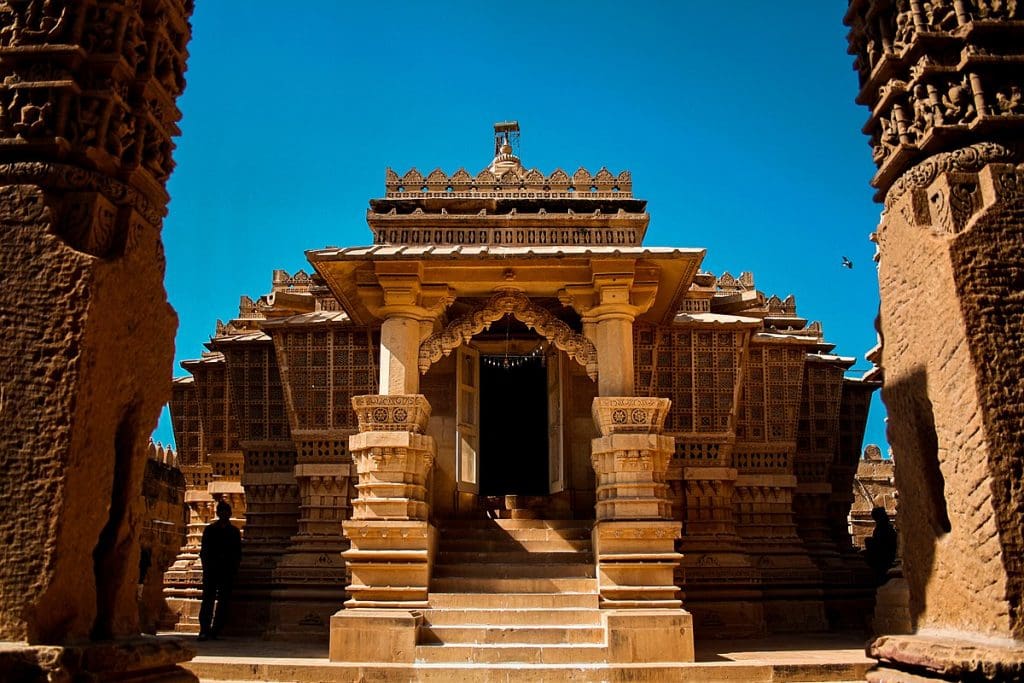
The temple stands high atop the dunes of the Thar and is one of the key highlights for Jains who tour Jaisalmer. The holy statue of Bhagwan Shantinath is housed in the temple, and the ceiling structure is stunning, depicting the lotus form. Lodurva’s ambience and feel, as well as its preserved temple, is quiet and pleasant.
It should be emphasized that non-Jain guests can only visit the Jain temple from morning to noon. Following then, it is solely accessible and available to the Jain devout.
Shri Mahaveer Ji temple, Karauli
The Chulgiri Jain temple is perched atop the Aravalli hills on the Jaipur-Agra highway. The year 1953 is credited with the establishment of the Jain temple atop the Aravalli hills.The temple is magnificently built and is a popular pilgrimage spot for Jains in India.
The wonder of the temple appeared in the year 1966 with a 7-foot-high figure of Lord Parshvnath made of white stone, which made a significant impact in the state of Rajasthan. Also during Panch Kalyanak celebration in May 1982, a magnificent idol of Lord Mahaveer Swami with a height of 21 feet and a wide area of 75 by 65 feet was erected.
Besides the statue’s position, a 65-foot-long dome was built to protect it. The massive Jain Yantra of four feet etched on a copper plate weighing 40 kg embraces the rooftop of the Chulgiri Jain temple.
FAQs for Jain Temples in Rajasthan
What are the most famous Jain temples in Rajasthan?
- Dilwara Temples, Mount Abu: Renowned for their exquisite marble carvings and intricate architecture.
- Ranakpur Jain Temple: Famous for its detailed carvings and 1444 marble pillars, each uniquely designed.
- Shri Mahavirji Jain Temple, Karauli: A major pilgrimage site dedicated to Lord Mahavir.
What are the visiting hours for Jain temples in Rajasthan?
- Most Jain temples in Rajasthan open early in the morning around 6 AM and close by sunset. Specific timings can vary, and it’s advisable to check in advance for any particular temple you plan to visit.
Is there any dress code for visiting Jain temples in Rajasthan?
- Yes, modest dress is required. Visitors should cover their shoulders and knees. In some temples, you may also be asked to temporarily remove leather items like belts and wallets, as leather is not allowed inside the temple premises.
Are there any fees to enter the Jain temples in Rajasthan?
- Most Jain temples do not charge an entry fee, but some might have a small charge for photography or for special entry into restricted areas.
Can non-Jains enter the temples?
- Yes, non-Jains are generally welcome to visit Jain temples. However, visitors are expected to respect the religious practices and cleanliness rituals, such as washing hands and feet before entering.
What should I expect when visiting a Jain temple in Rajasthan?
- Expect a serene atmosphere conducive to meditation and prayer. Photography restrictions may apply in the inner sanctums of the temples. Additionally, some temples might offer prasad (a small offering of food) or opportunities to participate in rituals.
Are there guides available at these temples?
- Yes, at major temple sites like Dilwara and Ranakpur, licensed guides are available who can explain the architectural significance and religious importance of the temples. It’s advisable to hire a guide for a more informative visit.
These FAQs should help visitors understand and respect the cultural and religious practices associated with Jain temples in Rajasthan, ensuring a respectful and enriching experience.
Read More: Latest



